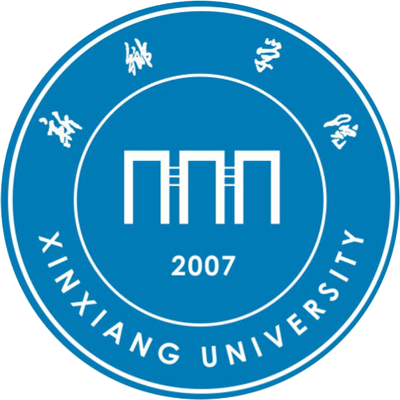详细信息
燃料电池用碱性阴离子交换膜链结构调控研究进展 ( EI收录)
Progress of polymer chain structure regulation of alkaline anion-exchange membranes for fuel cells
文献类型:期刊文献
中文题名:燃料电池用碱性阴离子交换膜链结构调控研究进展
英文题名:Progress of polymer chain structure regulation of alkaline anion-exchange membranes for fuel cells
作者:司江菊[1,2];卢善富[1];相艳[1]
第一作者:司江菊
通讯作者:Lu, SF[1];Xiang, Y[1]
机构:[1]北京航空航天大学空间与环境学院仿生能源材料与器件北京市重点实验室,北京100191;[2]新乡学院化学化工学院,新乡453003
第一机构:北京航空航天大学空间与环境学院仿生能源材料与器件北京市重点实验室,北京100191
通讯机构:[1]corresponding author), Beihang Univ, Sch Space & Environm, Beijing Key Lab Bioinspired Energy Mat & Devices, Beijing 100191, Peoples R China.
年份:2019
卷号:64
期号:2
起止页码:153-164
中文期刊名:科学通报
外文期刊名:Chinese Science Bulletin
收录:CSTPCD;;EI(收录号:20191206655065);Scopus(收录号:2-s2.0-85062962705);WOS:【ESCI(收录号:WOS:000496439000005)】;北大核心:【北大核心2017】;CSCD:【CSCD2019_2020】;
基金:国家自然科学基金(21722601;21576007);北京市重点研发计划(Z171100000917011)资助
语种:中文
中文关键词:燃料电池;碱性阴离子交换膜;离子电导率;碱性稳定性;微观结构
外文关键词:fuel cells;alkaline anion-exchange membrane;ionic conductivity;alkaline stability;microstructure
摘要:碱性阴离子交换膜燃料电池(AAEMFCs)因氧还原动力学快、可使用非Pt催化剂、成本低等优点迅速发展成燃料电池的重点研究领域.作为AAEMFCs的核心组件,碱性阴离子交换膜(AAEMs)的性能直接影响着燃料电池的输出性能和使用寿命.为保证燃料电池高效、稳定、长时间的运行,AAEMs应具备高的离子电导率、尺寸及化学稳定性.但目前开发的膜尚难同时满足这些要求,在实际应用中依然面临阴离子传输效率与尺寸稳定性难以兼顾、碱性稳定性较差等问题.本文将结合近年来国内外及本课题组的研究进展,梳理AAEMs发展中存在的关键问题与解决思路,展望未来的发展方向.
Alkaline anion-exchange membrane fuel cells(AAEMFCs) have attracted worldwide interest due to their advantages including fast oxygen reduction kinetics, high compatibility with non-precious-metal catalyst and low cost. As one of the key components in AAEMFCs, the performance of alkaline anion exchange membranes(AAEMs) directly affects the power output and durability of the fuel cells. During fuel cell operating, AAEMs require high ionic conductivity, excellent dimensional and chemical stability to ensure high efficiency and outstanding durability. However, it is still difficult for any type of the AAEMs to meet all these requirements. This monograph summarizes recent development around the world for AAEMs, especially for the trade-off effect between ionic conductivity and stability of AAEMs as well as the proposed strategies for this issue. The charge carrier in AAEMs is OH^-, and it has a lower transporting efficiency owing to its lower mobility, higher dependence on water molecular and the blocking of many hydrophobic domains in AAEMs. The improvement of ion-exchange capacity(IEC) by increasing the grafting degree(GD) of cationic functional groups can, to some extent, solve this issue. however, a high GD always bring the following negative issues:(1) Excessive swelling of AAEMs and significant reducing in the dimensional stability of membranes;(2) the increase of OH^-concentration accelerates the kinetics of nucleophilic substitution and Hofmann elimination, leading to the degradation of cationic groups;(3) the enhanced polarization of the cationic groups and the hydrophilicity of the main chain enable the polymer backbone susceptible to nucleophilic attack by OH^-, resulting in the degradation of the membrane, and even short-circuit of the fuel cells. In order to solve these issues, various of polymer chain architectures have been designed and regulated. To balance the ionic conductivity and the dimensional stability in AAEMs, double, triple and multi-cations are grafted on one site of polymer backbone to achieve a sufficiently high IEC at relatively low GD. Another realistic strategy is constructing 3D anion channels by the segregated hydrophilic/hydrophobic phase. The alkali stability of the cationic groups is affected by many factors including field effects, steric effects and conformation of substituent groups, and so on. The improvement of chemical stability of AAEMs has been another formidable scientific challenge. Researchers reduce the kinetics of the nucleophilic substitution and elimination reactions, and improve the basic stability of the cationic groups by modulating the structure of substituent groups such as the introduction of electron-donating groups, increased steric hindrance, and adequate hydration of OH^-. Among various cationic groups, the piperidinium-based cations show high resistance against both nucleophilic substitution and elimination in alkaline conditions and at elevated temperature. Furthermore, the polymer backbones without ether band and electron-withdrawing groups have been synthesized and exabit highly resistant to alkali hydrolysis. Recently, new strategy for constructing ordered ion channels in AAEMs by novel porous materials such as metal-organic frameworks(MOF), Tr?ger’s base, and macrocyclic crown ether compounds, provide for efficient ionic transport. Additionally, highly stable metal complexes have been used as cationic group in AAEMs. These new trends will open up an exciting opportunity to design high-performance AAEMs. The appearance of highly stable AAEMs enables the AAEMFCs to be operated at 80°C, and the cell works stably in a period of study over 100 h. Although this progress is encouraging, there still remains work for improving the cell performance and stability. A 1000 h of stable operation at elevated temperatures will be the next mission for AAEMFCs. In addition, there are some fundamental issues necessary to explore, such as the transport mechanism of OH^-in the membrane, the molecular interaction of polyelectrolytes and their self-assembly mechanism in solution and film formation, the mechanism of the influence of morphology on the chemical stability of AAEMs, and the factors affecting the long-term stability of AAEMFCs. These scientific issues will be the focus of future research. The development of AAEMFCs is on its way, and it calls for more efforts in fundamental study, polymer chain architectures and morphology designing, and fuel cell engineering to make it viable.
参考文献:
![]() 正在载入数据...
正在载入数据...


